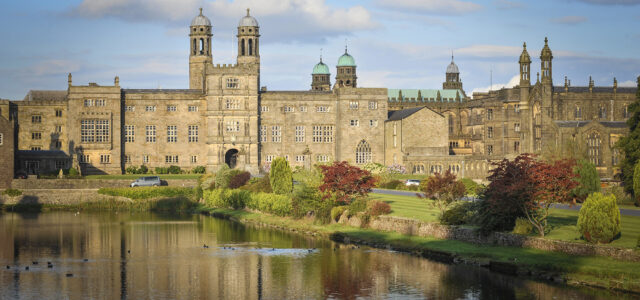
Royal Connections
The ancient house of Greengore, near Hurst Green, has a fascinating history. Andrew Stachulski delves into the past to find out more
Fortunately for those who love local history, the growth of the internet and the existence of highly detailed reference texts, has not taken the enjoyment, nor the labour, out of our research. The remarkable story of the fascinating old house of Greengore, which lies about one mile west of Hurst Green, is a case in point. The most obvious information trail will tell you that the house was built around 1605, but there was a building on the site centuries earlier. Greengore is easily reached by a pleasant path from Hurst Green, starting from the almshouses and proceeding via Dean Brook.
Greengore is actually a family, rather than a place, name. The name has been traced back to an ancient legal document of 1262. A later reference mentions that Thomas de Greengore (Greengaw) conferred some land to his son Adam in the manor of Bailey in 1314. For once, author Nikolaus Pevsner has rather little to say about Greengore: ‘A strange house, said to be a hunting lodge of Stonyhurst of the 15th century.’ He believes the construction of the windows and the striking external buttresses, date the current building to Elizabethan times. It was declared a Grade II listed building in 1967. There were no inner walls originally, just a balcony and the massive oak trusses, which have survived, show that at one time there was a domed oak ceiling. There was a separate cottage used as servants quarters, and an adjacent barn which was used for several years as one of the YHA camping barns.
The history of the old estate is complex. For many centuries Aighton, Bailey and Chaigley have been regarded as a joint parish, originally separate hamlets, as witnessed by the inscription on the Hurst Green almshouses. Probably Aighton (there are other old spellings) is the oldest and it can be dated back to at least 1086. Bailey is also an ancient manor, as the origins of Greengore testify, and the name survives in modified form in the Bayley Arms in Hurst Green. Chaigley is the one of the three lying to the north of Longridge Fell.
Very little is known for certain about the older Greengore building, but Thomas de Greengore is mentioned on several charters from around 1300. The house and estate passed from the Greengore to the de Holden family in 1388 and Greengore is mentioned again in a document of 1428, early in the reign of Henry VI, when it was settled by Richard de Holden on his son Henry.
Perhaps the most intriguing aspect of Greengore’s history is its association with King Henry VII, who was reputed to have visited the estate for a shooting party, though firm documentary evidence is lacking. At this stage Greengore was still independent of the Shireburn (Stonyhurst) estate. There is strong evidence that Henry VII knew the Shireburns, as he conferred an annuity on Sir Richard Shireburn, allowing him to benefit from the proceeds of the estate, around 1505. Quite possibly his visit for hunting – and maybe more than one – took place around this time. Greengore in this period lay within the Stonyhurst deer park and many sections of the old wall which bounded the deer park are extant, for instance by Stonyhurst Golf Club near the college.
The later history of Greengore is chronicled in detail. The Holdens sold the house and estate to Sir Richard Shireburn in 1620. The Shireburns had been lords of the manor of Stonyhurst since the late 14th century, and Sir Richard had begun a new house around 1592 according to Pevsner. At this time, Stonyhurst College had already been established in St Omer, France – the college was first sited on its present grounds in 1794. Subsequently Greengore changed hands many times, and in the 18th century it was for a time owned by Mary, Duchess of Norfolk. It last changed hands in 2020.
There it is, a fascinating glimpse into our past feudal estates through the lens of a remarkable building. You have to feel that Greengore may have still more secrets to reveal, especially through its link with Henry VII. Perhaps more ancient documents will come to light – those of us who love local history hope so!
Bibliography:
‘The Buildings of England, Lancashire: North’, Claire Hartwell and Nikolaus Pevsner
(Yale University Press, 2009)
British History Online: Victoria County History, Lancaster, vol. 7, Blackburn hundred: Mitton
With thanks to Emma Turner, David Kay and Agnes Bland for their help and information used in preparing this article.
Andrew Stachulski is co-author with Helen Shelmerdine (nee Shaw) of ‘The Forest of Bowland’, published in 2015 by Merlin Unwin @£14.99

